 |
 |
|
 |
|
 |
|  |
|  |
|
 |
|
 |
|  |
|  |
|
 |
Following the discussion p.a-u on how to generate sediment layering
without immediately requiring the use of isosurfaces, I have been
playing a bit with different ideas.
First, in order to focus on something tangible, I got two Real World
examples:
https://geologylearn.blogspot.com/2015/11/sedimentary-structures.html
https://blogs.egu.eu/divisions/ts/2019/12/27/features-from-the-field-bedding-stratification/
Then, I used Gimp to draw a rough b/w image. This image I loaded into
GeoControl, my old heightfield generator, and exported a .tga image_map
that I could use as height_field in POV.
A tentative result is attached here. Not bad for a first,I think. :-)
Note: Jaime Vives Piqueres is the author of hf2iso. I can recommend it
if you want to play with isosurface landscapes.
--
Thomas
Post a reply to this message
Attachments:
Download 'hf_sedimentary_test.png' (486 KB)
Preview of image 'hf_sedimentary_test.png'
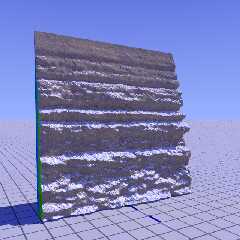
|
 |
|  |
|  |
|
 |
|
 |
|  |
|  |
|
 |
Op 18/09/2023 om 15:04 schreef Thomas de Groot:
> Note: Jaime Vives Piqueres is the author of hf2iso. I can recommend it
> if you want to play with isosurface landscapes.
>
As an illustration of this, I include here an example rock face I
rendered while testing, back in 2020.
--
Thomas
Post a reply to this message
Attachments:
Download 'hf2iso_tga_ng3.png' (919 KB)
Preview of image 'hf2iso_tga_ng3.png'
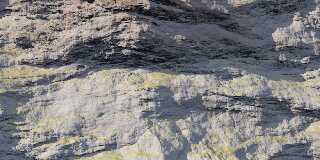
|
 |
|  |
|  |
|
 |
|
 |
|  |
|  |
|
 |
Thomas de Groot <tho### [at] degroot org> wrote:
> Following the discussion p.a-u on how to generate sediment layering
> without immediately requiring the use of isosurfaces, I have been
> playing a bit with different ideas.
>
> First, in order to focus on something tangible, I got two Real World
> examples:
> https://geologylearn.blogspot.com/2015/11/sedimentary-structures.html
>
https://blogs.egu.eu/divisions/ts/2019/12/27/features-from-the-field-bedding-stratification/
>
> Then, I used Gimp to draw a rough b/w image. This image I loaded into
> GeoControl, my old heightfield generator, and exported a .tga image_map
> that I could use as height_field in POV.
>
> A tentative result is attached here. Not bad for a first,I think. :-)
>
> Note: Jaime Vives Piqueres is the author of hf2iso. I can recommend it
> if you want to play with isosurface landscapes.
>
> --
> Thomas
It looks very promising, Thomas! Any idea yet how you would go about
constructing an entire feature (e.g. cliffside in a landscape)?
The links you posted are quite inspiring. The first image in the first link is
something I've tried to do, but always seem to fail at. Later on that page, I
was amazed to see that sand ripples could be captured in such a way.
Ultimately, nothing will beat a full 3d simulation using voxels or similar, but
who's got the hardware for that? (Or the algorithms? ;P)
Btw, they mentioned Zion National Park. Did you ever get to go there? I was
there when I was six, on a road trip my dad took us on when following a
meandering path to Montana. Zion was my favorite out of all the places we
visited. The reddish cliffs were pure eye candy. I was hoping to see some desert
sandstone plateaus, but we never passed through any such areas :(
Sam org> wrote:
> Following the discussion p.a-u on how to generate sediment layering
> without immediately requiring the use of isosurfaces, I have been
> playing a bit with different ideas.
>
> First, in order to focus on something tangible, I got two Real World
> examples:
> https://geologylearn.blogspot.com/2015/11/sedimentary-structures.html
>
https://blogs.egu.eu/divisions/ts/2019/12/27/features-from-the-field-bedding-stratification/
>
> Then, I used Gimp to draw a rough b/w image. This image I loaded into
> GeoControl, my old heightfield generator, and exported a .tga image_map
> that I could use as height_field in POV.
>
> A tentative result is attached here. Not bad for a first,I think. :-)
>
> Note: Jaime Vives Piqueres is the author of hf2iso. I can recommend it
> if you want to play with isosurface landscapes.
>
> --
> Thomas
It looks very promising, Thomas! Any idea yet how you would go about
constructing an entire feature (e.g. cliffside in a landscape)?
The links you posted are quite inspiring. The first image in the first link is
something I've tried to do, but always seem to fail at. Later on that page, I
was amazed to see that sand ripples could be captured in such a way.
Ultimately, nothing will beat a full 3d simulation using voxels or similar, but
who's got the hardware for that? (Or the algorithms? ;P)
Btw, they mentioned Zion National Park. Did you ever get to go there? I was
there when I was six, on a road trip my dad took us on when following a
meandering path to Montana. Zion was my favorite out of all the places we
visited. The reddish cliffs were pure eye candy. I was hoping to see some desert
sandstone plateaus, but we never passed through any such areas :(
Sam
Post a reply to this message
|
 |
|  |
|  |
|
 |
|
 |
|  |
|  |
|
 |
Op 23-9-2023 om 01:08 schreef Samuel B.:
> Thomas de Groot <tho### [at] degroot org> wrote:
>> Following the discussion p.a-u on how to generate sediment layering
>> without immediately requiring the use of isosurfaces, I have been
>> playing a bit with different ideas.
>>
>> First, in order to focus on something tangible, I got two Real World
>> examples:
>> https://geologylearn.blogspot.com/2015/11/sedimentary-structures.html
>>
https://blogs.egu.eu/divisions/ts/2019/12/27/features-from-the-field-bedding-stratification/
>>
>> Then, I used Gimp to draw a rough b/w image. This image I loaded into
>> GeoControl, my old heightfield generator, and exported a .tga image_map
>> that I could use as height_field in POV.
>>
>> A tentative result is attached here. Not bad for a first,I think. :-)
>>
>> Note: Jaime Vives Piqueres is the author of hf2iso. I can recommend it
>> if you want to play with isosurface landscapes.
>>
>> --
>> Thomas
>
> It looks very promising, Thomas! Any idea yet how you would go about
> constructing an entire feature (e.g. cliffside in a landscape)?
>
Thanks Sam. It is very preliminary still. I have not yet thought about
implementing this into a fully-fledged height_field/landscape, and
possibly this is going to be difficult.
While digging through my archives I came across a couple of macros I
wrote back in 2006, inspired by textures devised by PM 2Ring (see:
https://news.povray.org/povray.binaries.images/thread/%3C4458a6b4%40news.povray.org%3E/),
and forgot about. I may need to revise them a bit but they render as the
attached images.
However, they are still available here:
https://news.povray.org/povray.binaries.scene-files/thread/%3C44649a96%40news.povray.org%3E/?ttop=441393&toff=500
https://news.povray.org/povray.binaries.scene-files/thread/%3C4461eb1f%40news.povray.org%3E/?ttop=441393&toff=500
https://news.povray.org/povray.binaries.scene-files/thread/%3C446841e1%40news.povray.org%3E/?ttop=441393&toff=500
> The links you posted are quite inspiring. The first image in the first link is
> something I've tried to do, but always seem to fail at. Later on that page, I
> was amazed to see that sand ripples could be captured in such a way.
>
Yes, amazing, isn't it? Those things are what have always attracted me
in sedimentary geology. And to realise that those same features can also
be found as far back as deep into the Precambrian, more than 4 billion
years ago, before even life took hold on this planet...
> Ultimately, nothing will beat a full 3d simulation using voxels or similar, but
> who's got the hardware for that? (Or the algorithms? ;P)
>
Good question...
> Btw, they mentioned Zion National Park. Did you ever get to go there? I was
> there when I was six, on a road trip my dad took us on when following a
> meandering path to Montana. Zion was my favorite out of all the places we
> visited. The reddish cliffs were pure eye candy. I was hoping to see some desert
> sandstone plateaus, but we never passed through any such areas :(
>
Alas, I never visited that iconic site. The cliffs are textbook examples
of a diversity of ancient environments. Something for another life! :-)
--
Thomas org> wrote:
>> Following the discussion p.a-u on how to generate sediment layering
>> without immediately requiring the use of isosurfaces, I have been
>> playing a bit with different ideas.
>>
>> First, in order to focus on something tangible, I got two Real World
>> examples:
>> https://geologylearn.blogspot.com/2015/11/sedimentary-structures.html
>>
https://blogs.egu.eu/divisions/ts/2019/12/27/features-from-the-field-bedding-stratification/
>>
>> Then, I used Gimp to draw a rough b/w image. This image I loaded into
>> GeoControl, my old heightfield generator, and exported a .tga image_map
>> that I could use as height_field in POV.
>>
>> A tentative result is attached here. Not bad for a first,I think. :-)
>>
>> Note: Jaime Vives Piqueres is the author of hf2iso. I can recommend it
>> if you want to play with isosurface landscapes.
>>
>> --
>> Thomas
>
> It looks very promising, Thomas! Any idea yet how you would go about
> constructing an entire feature (e.g. cliffside in a landscape)?
>
Thanks Sam. It is very preliminary still. I have not yet thought about
implementing this into a fully-fledged height_field/landscape, and
possibly this is going to be difficult.
While digging through my archives I came across a couple of macros I
wrote back in 2006, inspired by textures devised by PM 2Ring (see:
https://news.povray.org/povray.binaries.images/thread/%3C4458a6b4%40news.povray.org%3E/),
and forgot about. I may need to revise them a bit but they render as the
attached images.
However, they are still available here:
https://news.povray.org/povray.binaries.scene-files/thread/%3C44649a96%40news.povray.org%3E/?ttop=441393&toff=500
https://news.povray.org/povray.binaries.scene-files/thread/%3C4461eb1f%40news.povray.org%3E/?ttop=441393&toff=500
https://news.povray.org/povray.binaries.scene-files/thread/%3C446841e1%40news.povray.org%3E/?ttop=441393&toff=500
> The links you posted are quite inspiring. The first image in the first link is
> something I've tried to do, but always seem to fail at. Later on that page, I
> was amazed to see that sand ripples could be captured in such a way.
>
Yes, amazing, isn't it? Those things are what have always attracted me
in sedimentary geology. And to realise that those same features can also
be found as far back as deep into the Precambrian, more than 4 billion
years ago, before even life took hold on this planet...
> Ultimately, nothing will beat a full 3d simulation using voxels or similar, but
> who's got the hardware for that? (Or the algorithms? ;P)
>
Good question...
> Btw, they mentioned Zion National Park. Did you ever get to go there? I was
> there when I was six, on a road trip my dad took us on when following a
> meandering path to Montana. Zion was my favorite out of all the places we
> visited. The reddish cliffs were pure eye candy. I was hoping to see some desert
> sandstone plateaus, but we never passed through any such areas :(
>
Alas, I never visited that iconic site. The cliffs are textbook examples
of a diversity of ancient environments. Something for another life! :-)
--
Thomas
Post a reply to this message
Attachments:
Download 'cross-bedded sandstone.png' (479 KB)
Download 'sandstone2.png' (626 KB)
Preview of image 'cross-bedded sandstone.png'
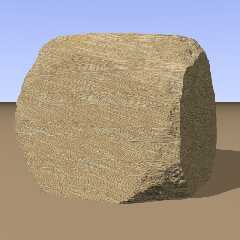
Preview of image 'sandstone2.png'
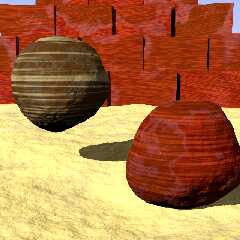
|
 |
|  |
|  |
|
 |
|
 |
|  |
|  |
|
 |
Here is just a subtle variation on the first experiment by transforming
the original height_field by a pair of matrix-shears (first y to z, then
z to y). (matrix-)shears might play an important role in this project, I
think.
--
Thomas
Post a reply to this message
Attachments:
Download 'hf_sedimentary_test_04.jpg' (177 KB)
Preview of image 'hf_sedimentary_test_04.jpg'
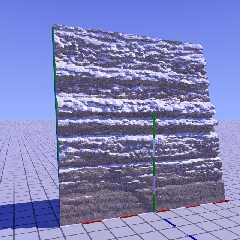
|
 |
|  |
|  |
|
 |
|
 |
|  |
|  |
|
 |
Thomas de Groot <tho### [at] degroot org> wrote:
> Op 18/09/2023 om 15:04 schreef Thomas de Groot:
> > Note: Jaime Vives Piqueres is the author of hf2iso. I can recommend it
> > if you want to play with isosurface landscapes.
> >
>
> As an illustration of this, I include here an example rock face I
> rendered while testing, back in 2020.
>
> --
> Thomas
The image I just posted used hf2iso as well, but my rock faces are not as
realistic as yours! I'll be interested in seeing more of your work on this, as
I'd like to find a good way to do interesting landscapes that don't take 10
weeks to render...
-- Chris R. org> wrote:
> Op 18/09/2023 om 15:04 schreef Thomas de Groot:
> > Note: Jaime Vives Piqueres is the author of hf2iso. I can recommend it
> > if you want to play with isosurface landscapes.
> >
>
> As an illustration of this, I include here an example rock face I
> rendered while testing, back in 2020.
>
> --
> Thomas
The image I just posted used hf2iso as well, but my rock faces are not as
realistic as yours! I'll be interested in seeing more of your work on this, as
I'd like to find a good way to do interesting landscapes that don't take 10
weeks to render...
-- Chris R.
Post a reply to this message
|
 |
|  |
|  |
|
 |
|
 |
|  |
|  |
|
 |
Thomas de Groot <tho### [at] degroot org> wrote:
> Op 23-9-2023 om 01:08 schreef Samuel B.:
> > Thomas de Groot <tho### [at] degroot org> wrote:
> Op 23-9-2023 om 01:08 schreef Samuel B.:
> > Thomas de Groot <tho### [at] degroot org> wrote:
> >> Following the discussion p.a-u on how to generate sediment layering
> >> without immediately requiring the use of isosurfaces [...]
> >
> > It looks very promising, Thomas! Any idea yet how you would go about
> > constructing an entire feature (e.g. cliffside in a landscape)?
> >
> Thanks Sam. It is very preliminary still. I have not yet thought about
> implementing this into a fully-fledged height_field/landscape, and
> possibly this is going to be difficult.
>
> While digging through my archives I came across a couple of macros I
> wrote back in 2006, inspired by textures devised by PM 2Ring [...]
Those are what you attached? The cross-bedded sandstone material looks very
good.
> > The links you posted are quite inspiring. The first image in the first link is
> > something I've tried to do, but always seem to fail at. Later on that page, I
> > was amazed to see that sand ripples could be captured in such a way.
> >
> Yes, amazing, isn't it? Those things are what have always attracted me
> in sedimentary geology. And to realise that those same features can also
> be found as far back as deep into the Precambrian, more than 4 billion
> years ago, before even life took hold on this planet...
Yeah... And to think, one could also find such things (and even
never-before-seen things) on different planets and moons. Differences in
gravity, atmospheric pressure, heat level and dissipation, primary erosive
liquids... these could all create geology quite a bit different than what we see
here on Earth.
Sam org> wrote:
> >> Following the discussion p.a-u on how to generate sediment layering
> >> without immediately requiring the use of isosurfaces [...]
> >
> > It looks very promising, Thomas! Any idea yet how you would go about
> > constructing an entire feature (e.g. cliffside in a landscape)?
> >
> Thanks Sam. It is very preliminary still. I have not yet thought about
> implementing this into a fully-fledged height_field/landscape, and
> possibly this is going to be difficult.
>
> While digging through my archives I came across a couple of macros I
> wrote back in 2006, inspired by textures devised by PM 2Ring [...]
Those are what you attached? The cross-bedded sandstone material looks very
good.
> > The links you posted are quite inspiring. The first image in the first link is
> > something I've tried to do, but always seem to fail at. Later on that page, I
> > was amazed to see that sand ripples could be captured in such a way.
> >
> Yes, amazing, isn't it? Those things are what have always attracted me
> in sedimentary geology. And to realise that those same features can also
> be found as far back as deep into the Precambrian, more than 4 billion
> years ago, before even life took hold on this planet...
Yeah... And to think, one could also find such things (and even
never-before-seen things) on different planets and moons. Differences in
gravity, atmospheric pressure, heat level and dissipation, primary erosive
liquids... these could all create geology quite a bit different than what we see
here on Earth.
Sam
Post a reply to this message
|
 |
|  |
|  |
|
 |
|
 |
|  |
|  |
|
 |
Op 25/09/2023 om 22:20 schreef Samuel B.:
> Thomas de Groot <tho### [at] degroot org> wrote:
>> While digging through my archives I came across a couple of macros I
>> wrote back in 2006, inspired by textures devised by PM 2Ring [...]
>
> Those are what you attached? The cross-bedded sandstone material looks very
> good.
>
Yes they are indeed (i.e. attached, and very good) ;-)
>>> The links you posted are quite inspiring. The first image in the first link is
>>> something I've tried to do, but always seem to fail at. Later on that page, I
>>> was amazed to see that sand ripples could be captured in such a way.
>>>
>> Yes, amazing, isn't it? Those things are what have always attracted me
>> in sedimentary geology. And to realise that those same features can also
>> be found as far back as deep into the Precambrian, more than 4 billion
>> years ago, before even life took hold on this planet...
>
> Yeah... And to think, one could also find such things (and even
> never-before-seen things) on different planets and moons. Differences in
> gravity, atmospheric pressure, heat level and dissipation, primary erosive
> liquids... these could all create geology quite a bit different than what we see
> here on Earth.
>
Yes, I thought about that too. There are definitely (rippled) sand dunes
on Mars, very similar to Earth's despite a much thinner atmosphere. I am
not sure, but I seem to remember that the few photographs we got from
the surface of Titan in 2005 showed some tell-tale sedimentary
structures. At least there are wind-blown dunes and "river" systems in a
really alien landscape where water is replaced by hydrocarbons... And
indeed, we can already predict that any planet we discover outside the
Solar System (James Webb telescope) which has an atmosphere will also
show very similar sedimentary processes and structures on its surface in
accordance with its own particular chemistry.
--
Thomas org> wrote:
>> While digging through my archives I came across a couple of macros I
>> wrote back in 2006, inspired by textures devised by PM 2Ring [...]
>
> Those are what you attached? The cross-bedded sandstone material looks very
> good.
>
Yes they are indeed (i.e. attached, and very good) ;-)
>>> The links you posted are quite inspiring. The first image in the first link is
>>> something I've tried to do, but always seem to fail at. Later on that page, I
>>> was amazed to see that sand ripples could be captured in such a way.
>>>
>> Yes, amazing, isn't it? Those things are what have always attracted me
>> in sedimentary geology. And to realise that those same features can also
>> be found as far back as deep into the Precambrian, more than 4 billion
>> years ago, before even life took hold on this planet...
>
> Yeah... And to think, one could also find such things (and even
> never-before-seen things) on different planets and moons. Differences in
> gravity, atmospheric pressure, heat level and dissipation, primary erosive
> liquids... these could all create geology quite a bit different than what we see
> here on Earth.
>
Yes, I thought about that too. There are definitely (rippled) sand dunes
on Mars, very similar to Earth's despite a much thinner atmosphere. I am
not sure, but I seem to remember that the few photographs we got from
the surface of Titan in 2005 showed some tell-tale sedimentary
structures. At least there are wind-blown dunes and "river" systems in a
really alien landscape where water is replaced by hydrocarbons... And
indeed, we can already predict that any planet we discover outside the
Solar System (James Webb telescope) which has an atmosphere will also
show very similar sedimentary processes and structures on its surface in
accordance with its own particular chemistry.
--
Thomas
Post a reply to this message
|
 |
|  |
|  |
|
 |
|
 |
|  |
|  |
|
 |
Op 25-9-2023 om 16:46 schreef Chris R:
> The image I just posted used hf2iso as well, but my rock faces are not as
> realistic as yours! I'll be interested in seeing more of your work on this, as
> I'd like to find a good way to do interesting landscapes that don't take 10
> weeks to render...
>
Yes, your render time is really extreme :-)
Something which can add interesting details to height_fields is using
sub-height_fields as proposed by Christian Froeschlin in... 2009. The
attached scene file shows how this works (I hope).
--
Thomas
Post a reply to this message
Attachments:
Download 'windows-1252' (11 KB)
Download 'wm_highmountainvalley_01b.png' (353 KB)
Preview of image 'wm_highmountainvalley_01b.png'
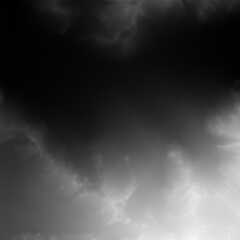
|
 |
|  |
|  |
|
 |
|
 |
|  |
|  |
|
 |
Il 24/09/2023 17:09, Thomas de Groot ha scritto:
> Here is just a subtle variation on the first experiment by transforming
> the original height_field by a pair of matrix-shears (first y to z, then
> z to y). (matrix-)shears might play an important role in this project, I
> think.
>
Both the images are very promising!
Paolo
Post a reply to this message
|
 |
|  |
|  |
|
 |
|
 |
|  |
|
 |




![]()